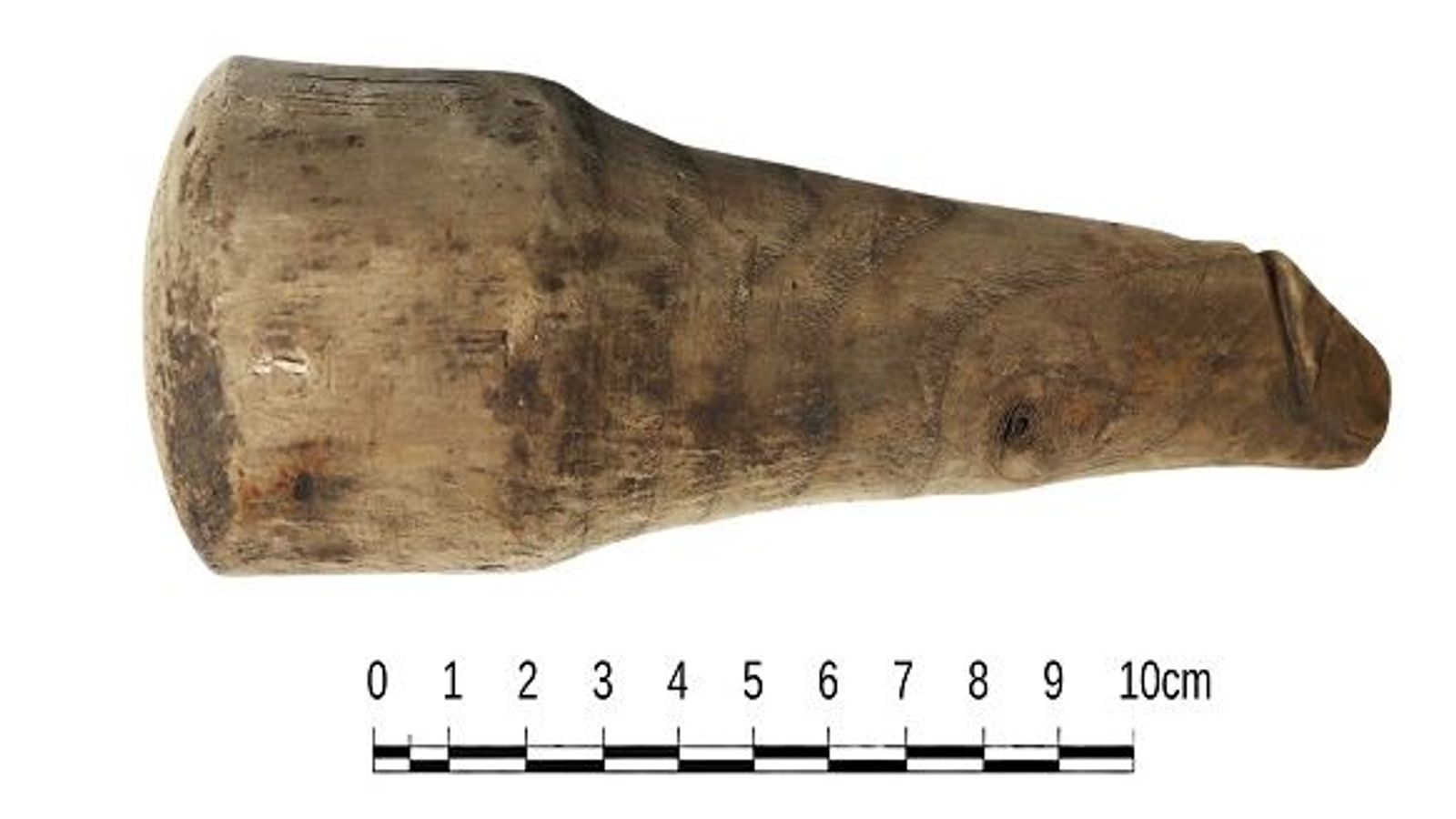A 2000-year-old wooden object initially thought to be a darning tool has been reassessed by archaeologists – who believe it may have been used as a sex toy in Roman times.
The 6.5 inch wooden object is smooth at both ends – one of the only clues experts had about what it might have been used for, Dr Rob Collins told Sky News.
Dr Collins is a senior lecturer in archaeology at Newcastle University and worked alongside Dr Rob Sands from University College Dublin on analysing the object.
“The question we found ourselves asking is what sort of object shaped like a phallus would have greater wear at both ends than in the middle?” Dr Collins said.
One possible answer? A dildo.
Phallic imagery is “all over the place in the Roman world”, Dr Collins said, and was commonly believed to protect against bad luck.
Art and literature from the time also reveal Romans used dildos.
But no life-size examples have been found before now.
The phallus was found in a ditch in 1992 at Vindolanda, a Roman fort south of Hadrian’s wall, among thousands of other wooden objects, shoes, dress accessories and leather off-cuts.
It was initially classified as a darning tool. Dr Collins said that was likely because of the volume of items that had been found at Vindolanda and the pressure to conserve them before they started to decompose.
But when he re-examined the object it was “pretty clear right away” that it was a phallus.
“It looks like a d***,” he said.
“The question is why, for what reason.”
It’s not possible to say for certain the phallus is a sex toy – although Dr Collins said he “would like to think it is”.
“This would be the first of its kind, and that’s always exciting,” he said.
“And also if it is a sexual implement, it’s nice to think that, you know, maybe there are people having fun up here on the frontier, and it’s not all dangerous barbarians or boredom while on patrol.”
The archaeologists came up with two other possibilities for what the object could be, which were laid out in a paper published in the journal Antiquity.
If not a dildo, the phallus may have been slotted into a statue which passers-by would touch for good luck.
Or it could have been used as a pestle, used to grind food, medicine or cosmetics with the idea that the protective properties of the phallus would be transferred to the ingredients in the process.
The phallus is now on display in the Vindolanda museum.






















